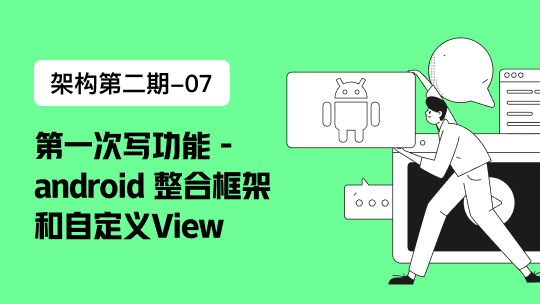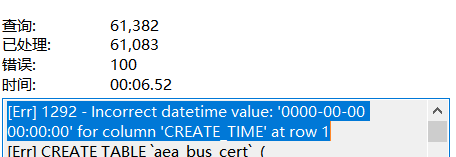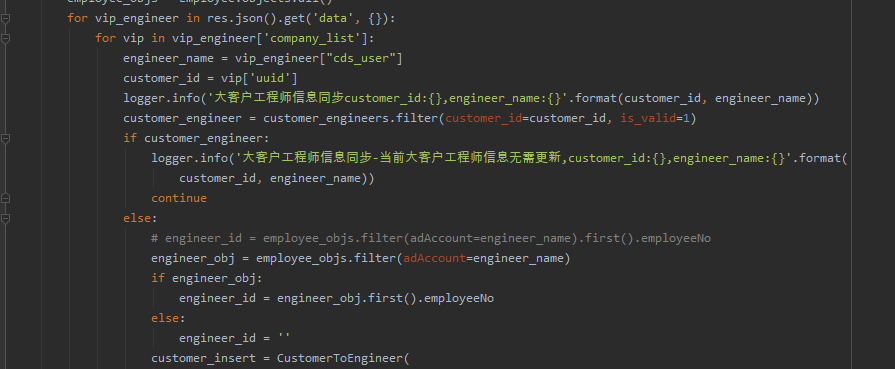在MongoDB里面,一条文档大致相当于关系型数据库里面的一行。在关系型数据库里面,行是被存储在表里面,并且有一个严格的结构。MongoDB里面把文档存储在集合里面而不是存在表里面,最根本上的不同就是在数据库层面上没有强制的结构限制。
定义一个文档纲要
MongoEngine允许你为文档定义一个纲要这可以帮你减少编码错误,让你利用现有的字段来定义各种功能的函数。
定义一个文档的纲要,首先需要创建一个继承 Document 的类。文档的字段都被作为这个继承类的属性。
[python]
from mongoengine import *
import datetime
class Page(Document):
title = StringField(max_length=200, required=True)
date_modified = DateTimeField(default=datetime.datetime.now)
动态文档纲要
MongoDB的一个好处就是为集合定义动态的纲要,这在有动态文档的场景下能让数据有组织,有计划的存储。
动态文档与一般文档的工作方式一样,但是任何为它们设置的数据或属性也会被存储
[python]
from mongoengine import *
class Page(DynamicDocument):
title = StringField(max_length=200, required=True)
Create a new page and add tags
>>> page = Page(title='Using MongoEngine')
>>> page.tags = ['mongodb', 'mongoengine']a>>> page.save()
>>> Page.objects(tags='mongoengine').count()
>>> 1
字段
在默认情况下,字段可以不需要。让一个字段强制存在,可以将这个字段的 require 关键字设置为 true 。字段也可以有验证限制。字段也可以设置默认值,在字段没有被提供值的时候会用到。可以使用的字段类型如下:
字段参数
db_field(default: None)
mongodb字段名
name(default: None)
mongoengine字段名
required(default: False)
如果设置为True,那么在存储数据的时候,如果这个字段为空,在验证的时候会产生ValidateError。
default(default: None)
为字段设置默认值。
default这个参量的定义是遵循 the general rules on Python,实例如下:
[python]
class ExampleFirst(Document):
Default an empty list
values = ListField(IntField(), default=list)
class ExampleSecond(Document):
Default a set of values
values = ListField(IntField(), default=lambda: [1,2,3])
class ExampleDangerous(Document):
This can make an .append call to add values to the default (and all the following objects),
instead to just an object
values = ListField(IntField(), default=[1,2,3])
unique(default: False)
如果设置为True,那么同一个collection里面不能有一个document与它的值相同。
unique_with(default: None)
让一个字段与该字段一同设置为unique
primary_key(default: False)
如果设置为True,那么这个字段被设置为主键。
choices(default: None)
当字段的值需要限制的时候设置一个可迭代的list或者tuple,也可以是一个嵌套的tuple。
[python]
SIZE = (('S', 'Small'),
('M', 'Medium'),
('L', 'Large'),
('XL', 'Extra Large'),
('XXL', 'Extra Extra Large'))
class Shirt(Document):
size = StringField(max_length=3, choices=SIZE)
或者只包含值的也可以
[python]
SIZE = ('S', 'M', 'L', 'XL', 'XXL')
class Shirt(Document):
size = StringField(max_length=3, choices=SIZE)
help_text(default: None)
在使用这个字段的时候输出帮助---在使用表单的时候用到。
verbose_name(default: None)
为这个字段起更能让人接受的名字---在使用表单的时候用到。
列表字段
mongodb里面允许你存储list。给document添加一个list字段,使用ListField类型,ListField把另一个类型的对象作为它的第一个参数,用来指定在list里面存储的数据类型。
[python]
class Page(Document):
tags = ListField(StringField(max_length=50))
嵌入的document
mongodb能够存储嵌入的document。需要为这些document定义Schemata,它们也是规范的document。
定义嵌入的document的时候,像往常一样定义一个document,但是要继承EmbeddedDocument而不是Document:
[python]
class Comment(EmbeddedDocument):
content = StringField()
在document中嵌入另一个document,使用 EmbeddedDocumentField 类型。第一个参数是嵌入document的类:
[python]
class Page(Document):
comments = ListField(EmbeddedDocumentField(Comment))
comment1 = Comment(content='Good work!')
comment2 = Comment(content='Nice article!')
page = Page(comments=[comment1, comment2])
字典字段
通常,会使用嵌入document来代替字典----总的来说字典不支持任何类型检查与约束。可是,有时候你不知道你想存储的数据是什么类型,这时候使用 DictField会比较合适:
[python]
class SurveyResponse(Document):
date = DateTimeField()
user = ReferenceField(User)
answers = DictField()
survey_response = SurveyResponse(date=datetime.now(), user=request.user)
response_form = ResponseForm(request.POST)
survey_response.answers = response_form.cleaned_data()
survey_response.save()
引用字段
引用字段用来引用在数据库里面存储的其他document,使用 ReferenceField ,在构造器中把另一个document的类作为第一个参数,然后就可以简单地指定document到这个字段。
[python]
class User(Document):
name = StringField()
class Page(Document):
content = StringField()
author = ReferenceField(User)
john = User(name="John Smith")
john.save()
post = Page(content="Test Page")
post.author = john
post.save()
User对象自动成为了引用类,在检索Page的时候会间接引用User。
当引用字段引用的是自身的时候,在ReferenceField 的构造器中添加 'self' 作为它的参数,如果引用还未定义的document,则使用应用类的类名作为构造器参数:
[python]
class Employee(Document):
name = StringField()
boss = ReferenceField('self')
profile_page = ReferenceField('ProfilePage')
class ProfilePage(Document):
content = StringField()
使用ListField的一对多
如果你想利用一个引用的list来实现一对多,那么引用会被存储成 DBRefs ,那么需要查询的时候,你也需要通过这个对象来进行查询。
[python]
class User(Document):
name = StringField()
class Page(Document):
content = StringField()
authors = ListField(ReferenceField(User))
bob = User(name="Bob Jones").save()
john = User(name="John Smith").save()
Page(content="Test Page", authors=[bob, john]).save()
Page(content="Another Page", authors=[john]).save()
Find all pages Bob authored
Page.objects(authors__in=[bob])
Find all pages that both Bob and John have authored
Page.objects(authors__all=[bob, john])
处理删除引用的document
默认情况下,mongodb不会检查数据的完整性,如果删除了其他document正在引用的document会引发一致性的问题。mongoengine的ReferenceField 添加了一些功能来维持数据一致性,为没一个引用提供了删除规则。删除规则通过声明ReferenceField 的reverse_delete_rule 属性来指定,就像这样:
[python]
class Employee(Document):
...
profile_page = ReferenceField('ProfilePage', reverse_delete_rule=mongoengine.NULLIFY)
这个例子中的声明定义了如果一个Employee对象删除,与它关联的ProfilePage也会删除。如果一批Employee对象被删除,那么与它关联的ProfilePage也会被删除。
它的值也可以被设置成如下的常量:
mongoengine.DO_NOTHING
这是默认值不做任何事。在删除的时候速度比较快,但是会带来数据不一致和空引用的问题。
mongoengine.DENY
如果仍有document引用到这个对象,那么会阻止删除
mongoengine.NULLIFY
任何对象的字段关联到这个对象的如果被删除,那么这个document也会被删除,关联关系作废。
mongoengine.CASCADE
任何对象的字段引用到这个对象的会被先删除
mongoengine.PULL
移除对于对象的引用关系
通用引用字段
一种次选的引用字段也是存在的, GenericReferenceField 。它可以让你引用任何类型的document,因此它不用其他document的类来作为它的参数:
[python]
class Link(Document):
url = StringField()
class Post(Document):
title = StringField()
class Bookmark(Document):
bookmark_object = GenericReferenceField()
link = Link(url='http://hmarr.com/mongoengine/')
link.save()
post = Post(title='Using MongoEngine')
post.save()
Bookmark(bookmark_object=link).save()
Bookmark(bookmark_object=post).save()
唯一性约束
mongoengine里面允许你制定字段在collection里面的值是唯一的,通过在构造器里面指定 unique=True
如果你想在数据库里存储已存在的value的document,会引发OperationError。你也可以通过使用unique_with来设置多字段的唯一性约束,它的值可以是一个字段名,或者是存储了字段名的list或tuple。
[python]
class User(Document):
username = StringField(unique=True)
first_name = StringField()
last_name = StringField(unique_with='first_name')
在保存时跳过document验证
你可以在使用save()的时候通过设置validate=False 来在保存的时候跳过验证
[python]
class Recipient(Document):
name = StringField()
email = EmailField()
recipient = Recipient(name='admin', email='root@localhost ')
recipient.save() # will raise a ValidationError while
recipient.save(validate=False) # won't
Document Collection
document对象是直接继承于Document ,会在数据库里面拥有它们自己的collection。这个collection的名字默认就是类的名字,被转化成了小写。如果你想改变这个collection的名字,可以在类里面创建一个字典属性叫meta,然后可以随意设置这个collection的名字了。
[python]
class Page(Document):
title = StringField(max_length=200, required=True)
meta = {'collection': 'cmsPage'}
索引
你 可以在document里面指定索引来使查询的时候速度更快。这个可以通过在meta字典里声明一个叫键为 'indexes', 值为存放索引规则的list的键值对来实现,一个索引规则可以是一个字段名,或者是由几个字段名组成的tuple,也可以是一个包含完整索引声明的字典。 可以在字段名前面加上+ 或者-来指定索引的顺序。这只会在联合索引中有效果。
[python]
class Page(Document):
title = StringField()
rating = StringField()
meta = {
'indexes': ['title', ('title', '-rating')]
}
meta字典中还有一下的选项可选:
fields (Default: None)
产生索引的字段,声名的方法与以上一样。
types (Default: True)
索引是否应该添加 _type字段
sparse (Default: False)
索引是否需要备份
unique (Default: False)
索引是否需要备份
地理空间索引
地理空间索引会自动为所有的 GeoPointField 创建。
也可以来明确地指定地理空间索引。这在你需要定义一个 DictField 的子域或者自己定制的包含一个点的字段的索引的时候很有用。创建地理空间索引的时候需要在字段名前面加 *:
[python]
class Place(Document):
location = DictField()
meta = {
'indexes': [
'*location.point',
],
}
顺序
在meta里面设置ordering的值可以指定你的 QuerySet 的默认顺序。在 QuerySet 被创建的时候顺序规则会被应用 ,它也可以通过使用 order_by() 来复写。
[python]
from datetime import datetime
class BlogPost(Document):
title = StringField()
published_date = DateTimeField()
meta = {
'ordering': ['-published_date']
}
blog_post_1 = BlogPost(title="Blog Post #1")
blog_post_1.published_date = datetime(2010, 1, 5, 0, 0 ,0)
blog_post_2 = BlogPost(title="Blog Post #2")
blog_post_2.published_date = datetime(2010, 1, 6, 0, 0 ,0)
blog_post_3 = BlogPost(title="Blog Post #3")
blog_post_3.published_date = datetime(2010, 1, 7, 0, 0 ,0)
blog_post_1.save()
blog_post_2.save()
blog_post_3.save()
get the "first" BlogPost using default ordering
from BlogPost.meta.ordering
latest_post = BlogPost.objects.first()
assert latest_post.title == "Blog Post #3"
override default ordering, order BlogPosts by "published_date"
first_post = BlogPost.objects.order_by("+published_date").first()
assert first_post.title == "Blog Post #1"
共享键
如果你的collection是共享的,那么你需要指定一个存储共享键的tuple, 使用 mongoengine.Document.meta里面的shard_key属性,
[python]
class LogEntry(Document):
machine = StringField()
app = StringField()
timestamp = DateTimeField()
data = StringField()
meta = {
'shard_key': ('machine', 'timestamp',)
}
Document继承
为 了创建一个你定义的类型的document,你必须继承document并且加上一些你需要的字段和方法。如果这不是一个直接继承document的子 类,那么这个类的数据不会存放在自己的collection中,而会存放在它的父类的collection里面。这能在检索关联的document的时候 提供更多的方便。
[python]
Stored in a collection named 'page'
class Page(Document):
title = StringField(max_length=200, required=True)
meta = {'allow_inheritance': True}
Also stored in the collection named 'page'
class DatedPage(Page):
date = DateTimeField()
处理现有的数据
为 了改正这种层次的document涉及的检索,在数据库里面的document会存储另两个属性:_cls 和 _types。这些在mongoengine的接口中对用户是隐藏的,可能在使用mongoengine处理一个已经存在的数据库的时候不会呈现出来。你 可能会需要禁止这个类的继承,方法如下:
[python]
Will work with data in an existing collection named 'cmsPage'
class Page(Document):
title = StringField(max_length=200, required=True)
meta = {
'collection': 'cmsPage',
'allow_inheritance': False,
}













